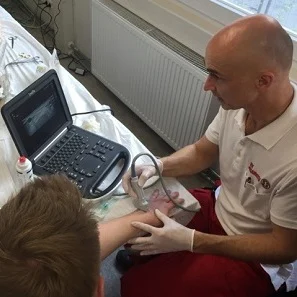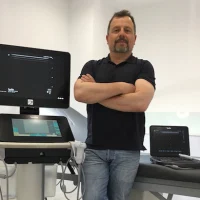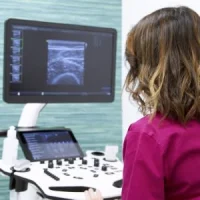Consultant Anaesthetist Stephan Rauscher uses point-of-care ultrasound as part of his daily routine working in the emergency department (ED) at the Katharinenhospital in Stuttgart. He is also involved in the training and scheduling of emergency physicians from the department. Any of these clinicians could potentially be called to an emergency in the underground tunnels of the vast Stuttgart 21 construction project and so, when the opportunity arose, he jumped at the chance to carry out an on-site training exercise in collaboration with members of other emergency services, and practice using ultrasound at the real point of patient care.
Stuttgart 21 is a massive construction project based around the city’s main railway station that will result in the current terminus becoming a through station, with a new line connecting directly to Ulm. In total, around 60 km of railway tunnels will be built under the city – over 20 km have already been completed – and, according to current estimates, the project is scheduled to finish in 2021.
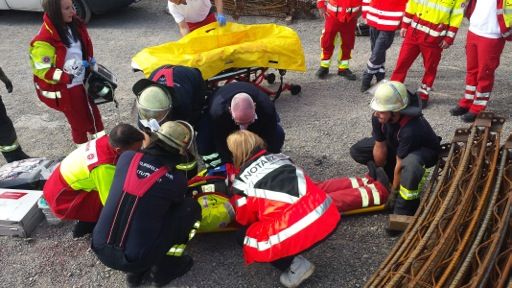
With such a huge project active in our city over so many years, it is more than likely that our teams will be called on to attend either injuries or other medical emergencies at the site, and some already have been. Working underground presents unique challenges, and rescue plans must be carefully designed and implemented to ensure patients can be rapidly assessed and brought back to the surface for treatment. Although we are constantly training and updating our teams, we rarely get to practice techniques in the ‘real world’. However, we recently arranged a training day on the building site itself, and this exercise gave us an excellent opportunity to familiarise ourselves as much as possible with the whole operation. We used the experience to prepare the teams for future emergency calls, making them more familiar with the logistics of a large construction site.
The day was coordinated with our local fire, rescue and ambulance services, as well as the project’s own safety teams, who demonstrated rescue plans they already have in place, and vehicles and elevators that have been specially equipped to get sick or injured patients out of the tunnels. The idea was to show as many paramedics and emergency physicians as possible around the construction site, to describe the safety plans that are in place, and to practice model situations in the tunnels, helping them become accustomed to such unusual surroundings. With such a large site, one of the biggest issues is knowing exactly where an incident has occurred, and so there are now designated meeting places, each of which is individually numbered. In an emergency, construction site staff simply have to give us the number of the nearest meeting place and wait there to take us to the casualty. By familiarising themselves with the site now, paramedics and emergency physicians will be well placed to respond to site emergencies in the future, and will know what to expect in that environment.
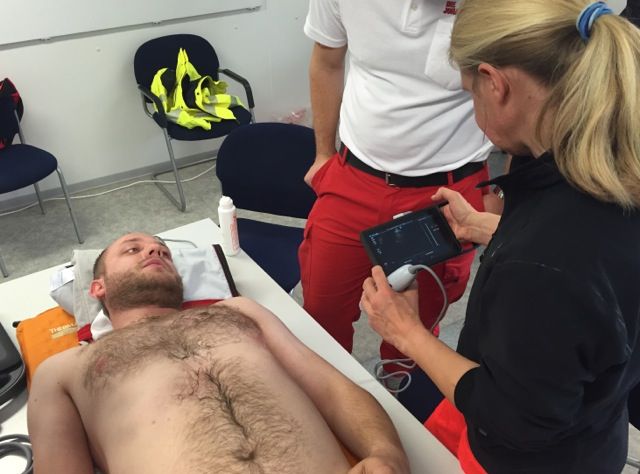
The participants gained experience of using point-of-care ultrasound in a pre-clinical setting as well as practicing some specific skills, such as inserting chest drains. We use ultrasound every day in our emergency department to guide vascular access, and carry out FAST, thoracic sonography, echocardiography, and scanning for pneumothorax, pleural effusion and pneumonia. We were very grateful to FUJIFILM for providing two SonoSite Edge® systems and a SonoSite iViz™ to use for the exercise. Although we don’t currently have systems available to our emergency response teams, I know of many colleagues in Germany who do, and I can see real potential for us using this technology in the future. It was very helpful to be able to train with the correct equipment, demonstrate how it could be used in many trauma situations, and develop skills that we will use every day, wherever we are in the city. Overall, the exercise was a great success, and we are hoping to repeat it next year, either on the Stuttgart 21 site or perhaps elsewhere. It was very impressive to see the construction operation first hand, and I am confident that knowing what to expect from these unusual surroundings will help my colleagues to quickly and effectively respond to emergencies on the site.
Source & Image Credit: Sonosite





